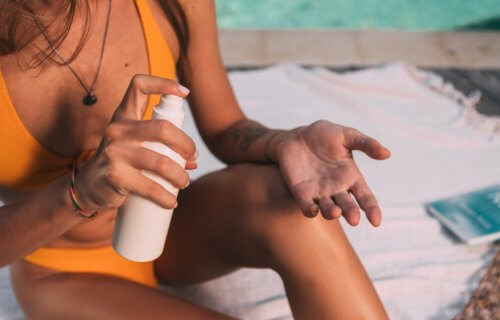LEEDS, United Kingdom — Certain sunscreens stop working after two hours and may even cause damage to the skin, a new study warns. In particular, an international team finds “mineral cream” or “chemical-free” sunscreens that contain zinc oxide may actually be doing more harm than good on sunny days.
Current testing practices examine ingredients individually rather than as a part of a formulation during sunlight exposure. Researchers from the University of Leeds, the University of Oregon, and Oregon State University found that zinc oxide appears to be a strong filter for sunlight on its own. However, when manufacturers mix it together with other ingredients it can be damaging to the skin.
“On its own, zinc oxide is an effective and harmless UV blocker. Our research raises concerns about how the individual formulation ingredients react with each other during use and this isn’t currently tested by the industry. Once exposed to sunlight for two hours, zinc oxide destroys the UVA protection provided by other ingredients. In this context, putting on sunscreen could actually make things worse because people believe they are being protected from harmful UV rays and may stay in the sun longer,” explains Leeds Professor Richard Blackburn in a university release.
Are some sunscreens actually turning toxic?
“The degradation of the UV filters not only decreased the effectiveness of the sunscreen, it also led to increased formula toxicity,” adds Professor James Hutchison from the University of Oregon. “So not only is the lack of effective UV protection an issue, the product itself may be causing harm during use in the sun.”
“Zinc oxide particles are frequently combined with UV filters in hybrid sunscreens or through layering of multiple cosmetics,” continues Oregon researcher and co-author Dr. Aurora Ginzburg. “Thus, in the design of future cosmetic formulations, it is critical that the potential for zinc oxide induced photodegradation of the whole formulation, or in combining products on the skin, be considered.”
“As an alternative, there are some excellent potential candidates from nature that are effective UV filters, but under current legislation the process to achieve regulatory approval is extremely expensive and takes many years. This is proving to be a barrier to innovation, which could provide more effective, safer and sustainable alternatives to current ingredients.” Prof. Blackburn concludes.
The study appears in the journal Photochemical & Photobiological Sciences.
South West News Service writer Joe Morgan contributed to this report.
